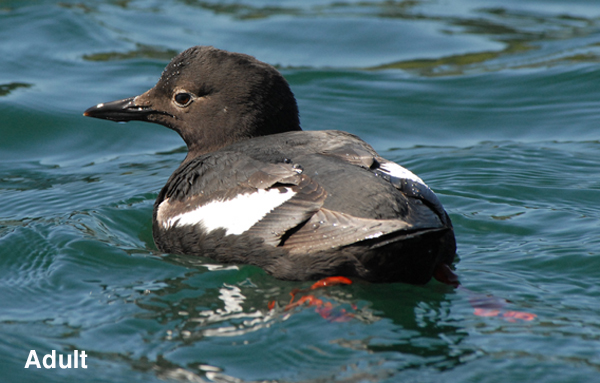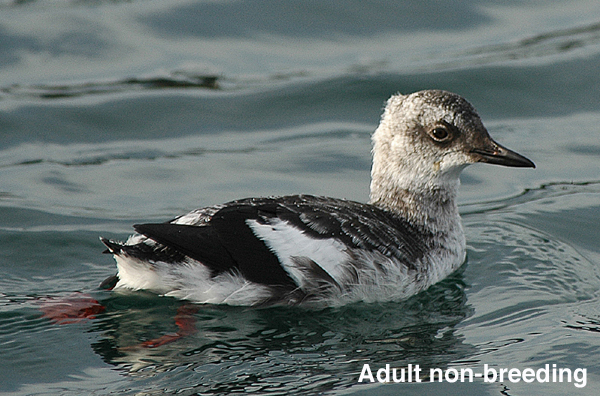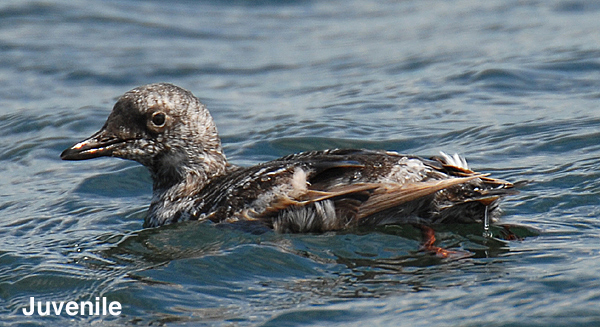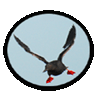
 |
|
 |
|
 |
|
 |
|
 |
|
 |
|
|
|
Pigeon Guillemots (PIGUs) Cepphus columba are dark brown, 13-inch, pigeon-shaped seabirds with white wing patches and bright fire-engine-red feet.
Their mouths display a similar red lining.
 |
This species inhabits the near shore environment along the Pacific coast of North America its territory extending from California to Alaska, and continuing around the Bering Sea west along the north Russia Pacific shore. Rough estimates indicate a total population of 235,000 birds. Typical of seabirds, Pigeon Guillemots dive under water to feed. Using their short stubby wings to “fly” under water, the birds follow a zigzag course to a rocky seabed where they search for benthic fish and invertebrates. The birds typically feed in water 10 to 30 meters deep. Pigeon Guillemots live and feed offshore except during April through September when they return to land to breed. During those months they usually come back to their natal breeding grounds along steep rocky or sandy cliffs or predator-free islets. The birds select rock cavities or carved out burrows for nesting. |
Early in the season the birds reestablish their pair bond (they mate for life) by billing, singing, shuffling around each other and participating in “water games.”Pigeon Guillemot colonies range in size from a couple pairs to hundreds of birds. Inside their burrows, guillemots lay one or two eggs, which they incubate for approximately 32 days. After the chicks hatch, both parents catch and carry small fish—mainly gunnels, sculpins, sandlance and herring—to the dark brown chicks. The chicks consume the entire fish with one gulp. As the youngsters grow their parents feed them larger fish until the young are ready to leave the burrow, after about 35 days. Juvenile guillemots fledge (leave the burrows) all by themselves usually under cover of darkness. They flutter and tumble from their high burrows and scurry to the nearby sea. For the first two weeks the fledglings are flightless yet they can feed themselves by diving underwater for prey. Once they develop flight feathers, the young birds quickly depart the colony and seek out more distant feeding areas. |
 |
 |
Around the time they fledge, juvenile guillemots molt into their “winter” plumage, which is generally sooty white with mottled wing patches and grayish heads. In the fall, the adults also molt into their non-breeding plumage. When all the young have fledged, the adults also leave the onshore colonies to feed offshore throughout the winter. Each spring the birds return again to the bluff colonies. |
Our work is supported by


